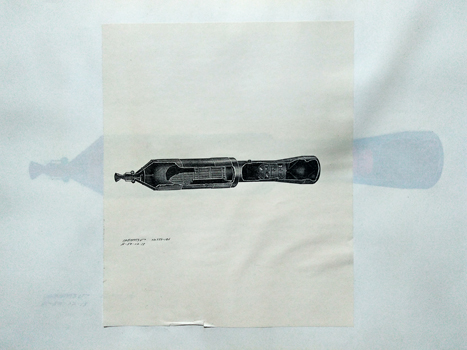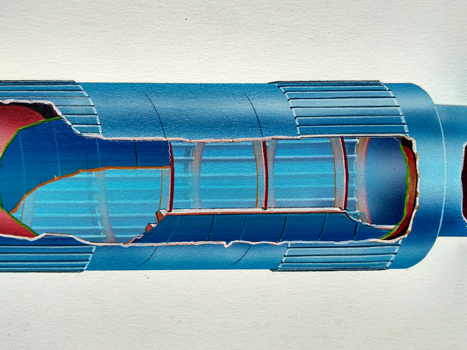
First word of the bomb
Takeo Takei. 原子爆彈 [Genshi Bakudan (ie: Atomic Bomb)]. Tokyo, Domei Tsushinsha September 1945. Octavo printed wrapper; 32pp including wrapper, untrimmed and loose (apparently as issued). Rather browned and a bit frayed round the edges. Au$750
Published as Domei Sosho No.1 by Domei - the national news agency - on 20th September 1945, apparently the day before the US occupation censorship had time to be fully implemented.* Domei Sosho no.2 was on the Potsdam declaration and there, I think, the series ended. I have read that 200,000 copies of this were printed. Worldcat locates one copy outside Japan - in Australia - and it doesn't appear in the catalogue of the Prange collection - the world's largest collection of occupation era documents, collected by the official historian to the occupation.
There is still nothing much to be found in English on Takeo or his pamphlet. As I can best figure, the story is that Takeo was a scientific and/or political correspondent for Domei and spoke English. He and a colleague listened in to allied broadcasts, translated Truman's statement on the bombing of Hiroshima and were the first to tell the Japanese government that the "new bomb" was an atomic bomb. Takeo's widow and son published a memorial book in 1995 with background and contemporary papers which doesn't seem to have worked its way to writers in English. From my stumbling through a review of that book I get the impression that Takeo was seen as an apologist for the US and their use of the bomb which was unfair. He was attempting to give as objectively as possible as much information as he could and what information he had came only from what could he could scrape together from radio broadcasts. How much of this view of him was long after the fact I don't know. He had been or became - I'm not clear on this - a communist journalist which can't have endeared him to any authorities.
There is a modern facsimile of this which may or may not be related to the book published by Mrs Takeo - it seems likely. That should not be mistaken for this. Neither should Takeo Takei the journalist be confused with Takeo Takei the illustrator.
*Nuclear physicist Sagane Ryokichi's 'Genshi Bakudan' published in October had two sections removed by the censor from every copy.





































































































































































